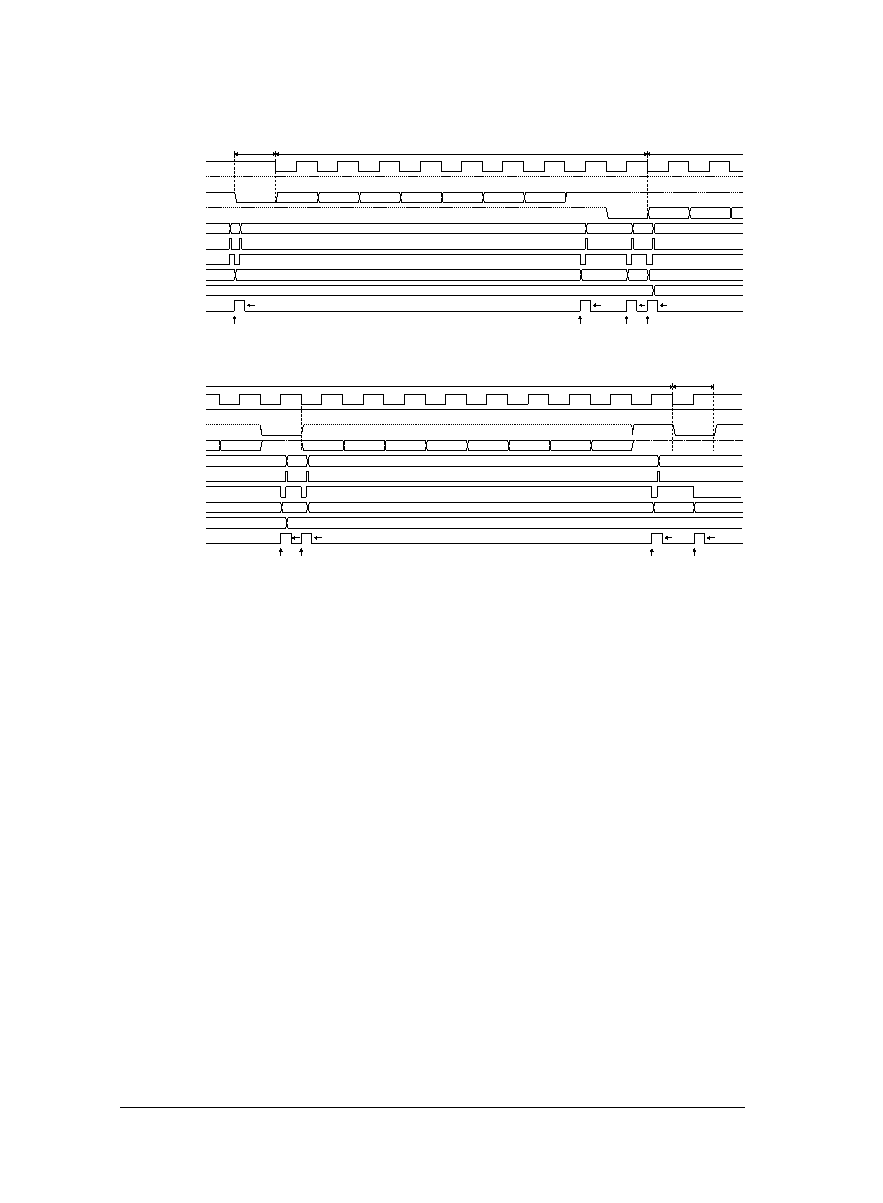- 您现在的位置:买卖IC网 > PDF目录136617 > S1C17554B00E10L 16-BIT, FLASH, 24 MHz, RISC MICROCONTROLLER, PBGA48 PDF资料下载
参数资料
| 型号: | S1C17554B00E10L |
| 元件分类: | 微控制器/微处理器 |
| 英文描述: | 16-BIT, FLASH, 24 MHz, RISC MICROCONTROLLER, PBGA48 |
| 封装: | 3.137 X 3.137 MM, 0.72 MM HEIGHT, 0.40 MM PITCH, WCSP-48 |
| 文件页数: | 117/318页 |
| 文件大小: | 2643K |
| 代理商: | S1C17554B00E10L |
第1页第2页第3页第4页第5页第6页第7页第8页第9页第10页第11页第12页第13页第14页第15页第16页第17页第18页第19页第20页第21页第22页第23页第24页第25页第26页第27页第28页第29页第30页第31页第32页第33页第34页第35页第36页第37页第38页第39页第40页第41页第42页第43页第44页第45页第46页第47页第48页第49页第50页第51页第52页第53页第54页第55页第56页第57页第58页第59页第60页第61页第62页第63页第64页第65页第66页第67页第68页第69页第70页第71页第72页第73页第74页第75页第76页第77页第78页第79页第80页第81页第82页第83页第84页第85页第86页第87页第88页第89页第90页第91页第92页第93页第94页第95页第96页第97页第98页第99页第100页第101页第102页第103页第104页第105页第106页第107页第108页第109页第110页第111页第112页第113页第114页第115页第116页当前第117页第118页第119页第120页第121页第122页第123页第124页第125页第126页第127页第128页第129页第130页第131页第132页第133页第134页第135页第136页第137页第138页第139页第140页第141页第142页第143页第144页第145页第146页第147页第148页第149页第150页第151页第152页第153页第154页第155页第156页第157页第158页第159页第160页第161页第162页第163页第164页第165页第166页第167页第168页第169页第170页第171页第172页第173页第174页第175页第176页第177页第178页第179页第180页第181页第182页第183页第184页第185页第186页第187页第188页第189页第190页第191页第192页第193页第194页第195页第196页第197页第198页第199页第200页第201页第202页第203页第204页第205页第206页第207页第208页第209页第210页第211页第212页第213页第214页第215页第216页第217页第218页第219页第220页第221页第222页第223页第224页第225页第226页第227页第228页第229页第230页第231页第232页第233页第234页第235页第236页第237页第238页第239页第240页第241页第242页第243页第244页第245页第246页第247页第248页第249页第250页第251页第252页第253页第254页第255页第256页第257页第258页第259页第260页第261页第262页第263页第264页第265页第266页第267页第268页第269页第270页第271页第272页第273页第274页第275页第276页第277页第278页第279页第280页第281页第282页第283页第284页第285页第286页第287页第288页第289页第290页第291页第292页第293页第294页第295页第296页第297页第298页第299页第300页第301页第302页第303页第304页第305页第306页第307页第308页第309页第310页第311页第312页第313页第314页第315页第316页第317页第318页

19 UNIVERSAL SERIAL INTERFACE (USI) [S1C17564]
19-16
Seiko Epson Corporation
S1C17554/564 TECHNICAL MANUAL
US_SCKx pin (input)
US_SCKx pin (output)
US_SDIx pin (input)
US_SDIx pin (output)
ISTGMOD[2:0]
ISTG (write)
ISBSY
ISSTA[2:0]
TD[7:0]
ISIF
Interrupt
A6
Transfer data 1
0x0
0x3
0x2
0x4
0x2
0x6
Transfer data 2
0x3
A5
A4
A3
A2
A1
A0
R/W = 1
ACK
Start
condition
Slave address reception
Data transmission
Start condition
detected
ACK
sent
Receive
buffer full
Transmit
buffer empty
* Reset by writing 1
*
0x0
D7
D6
(1) Start condition
→ Data transmission
0x6
0x2
Transfer data (n -1)
0x2
0x5
0x6
0x2
0x6
0x0
0x1
Transfer data n
ACK received Transmit buffer empty
Stop condition
detected
NAK
received
*
* Reset by writing 1
D5
D4
D3
D2
D1
D0
D7
D6
D0
ACK
US_SCKx pin (input)
US_SCKx pin (output)
US_SDIx pin (input)
US_SDIx pin (output)
ISTGMOD[2:0]
ISTG (write)
ISBSY
ISSTA[2:0]
TD[7:0]
ISIF
Interrupt
Data transmission
Stop
condition
NAK
(2) Data transmission
→ Stop condition
5.3.12 I
Figure 19.
2C Slave Data Transmission Timing Chart
Note: The timing chart above shows a basic transfer operation that does not include an actual I2C trans-
fer procedure. See “Receiving control byte in I2C slave mode” in “19.9 Precautions.”
(1) Waiting for start condition
I2C data transfer starts when the I2C master device generates a start condition (see Figure 19.5.3.3).
First enable this I2C slave to detect a start condition by setting ISTGMOD[2:0] to 0x0 (default) and writing
1 to ISTG. The I2C controller starts detecting a start condition and sets ISBSY to 1. ISBSY is set to 1 while
a start condition is being detected. ISBSY reverts to 0 and ISSTA[2:0] is set to 0x0 when the detection has
completed. Check if a start condition is generated by reading ISBSY or using an interrupt.
Note: Other operations cannot be started before a start condition is detected.
(2) Receiving slave address and transfer direction data bit
The I2C master sends the address of the slave device to be communicated and a transfer direction bit (see
Figure 19.5.3.4) after it has generated a start condition. Set this I2C slave into receiving status to receive the
slave address. To start reception, set ISTGMOD[2:0] to 0x3 and write 1 to ISTG.
This trigger starts sampling clocks input from the US_SCKx pin. When clocks are input, the I2C controller
loads the US_SDOx pin status to the shift register in sync with each clock. The received data is loaded to
the receive data buffer (RD[7:0]/USI_RDx register) once the 8-bit data has been received in the shift regis-
ter.
Writing 1 to ISTG sets ISBSY to 1. When the received data is loaded to the receive data buffer, ISBSY
reverts to 0 and ISSTA[2:0] is set to 0x3 (receive data buffer full). An interrupt request can be generated at
this point. Read the received data from the receive data buffer using this interrupt.
When a 7-bit address is used, the slave address and transfer direction bit can be obtained in one operation.
When a 10-bit address is used, save the first data received in the receive data buffer into the memory and
perform data reception again to obtain the remaining address bits.
相关PDF资料 |
PDF描述 |
|---|---|
| S1C17554D00E10H | 16-BIT, FLASH, 24 MHz, RISC MICROCONTROLLER, UUC |
| S1C17554F00E10P | 16-BIT, FLASH, 24 MHz, RISC MICROCONTROLLER, PQFP64 |
| S1C17564D00E199 | 16-BIT, FLASH, 24 MHz, RISC MICROCONTROLLER, UUC |
| S1C17651B00E199 | 16-BIT, FLASH, 2 MHz, RISC MICROCONTROLLER, PBGA |
| SPC563M54L3COBR | 32-BIT, FLASH, 64 MHz, MICROCONTROLLER, PQFP100 |
相关代理商/技术参数 |
参数描述 |
|---|---|
| S1C17555 | 制造商:EPSON 制造商全称:EPSON 功能描述:16-bit Single Chip Microcontroller |
| S1C17564 | 制造商:EPSON 制造商全称:EPSON 功能描述:16-bit Single Chip Microcontroller |
| S1C17564D111000 | 制造商:Epson Electronics America Inc 功能描述:16-bit, 128KB Flash (OSC3 = Ceramic) |
| S1C17564F111100 | 功能描述:显示驱动器和控制器 16-bit, 128KB Flash RoHS:否 制造商:Panasonic Electronic Components 工作电源电压:2.7 V to 5.5 V 最大工作温度: 安装风格:SMD/SMT 封装 / 箱体:QFN-44 封装:Reel |
| S1C17565 | 制造商:EPSON 制造商全称:EPSON 功能描述:16-bit Single Chip Microcontroller |
发布紧急采购,3分钟左右您将得到回复。